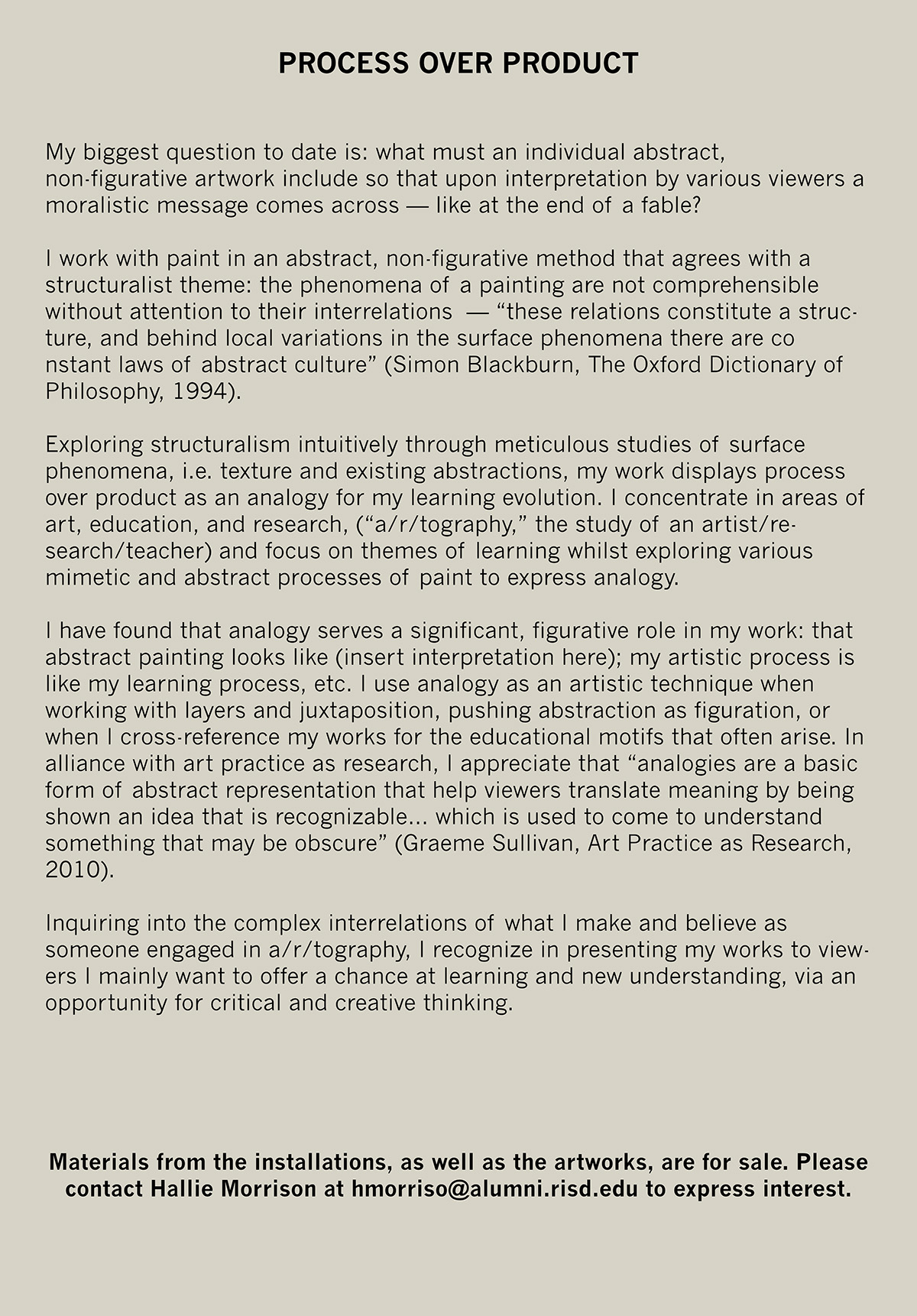
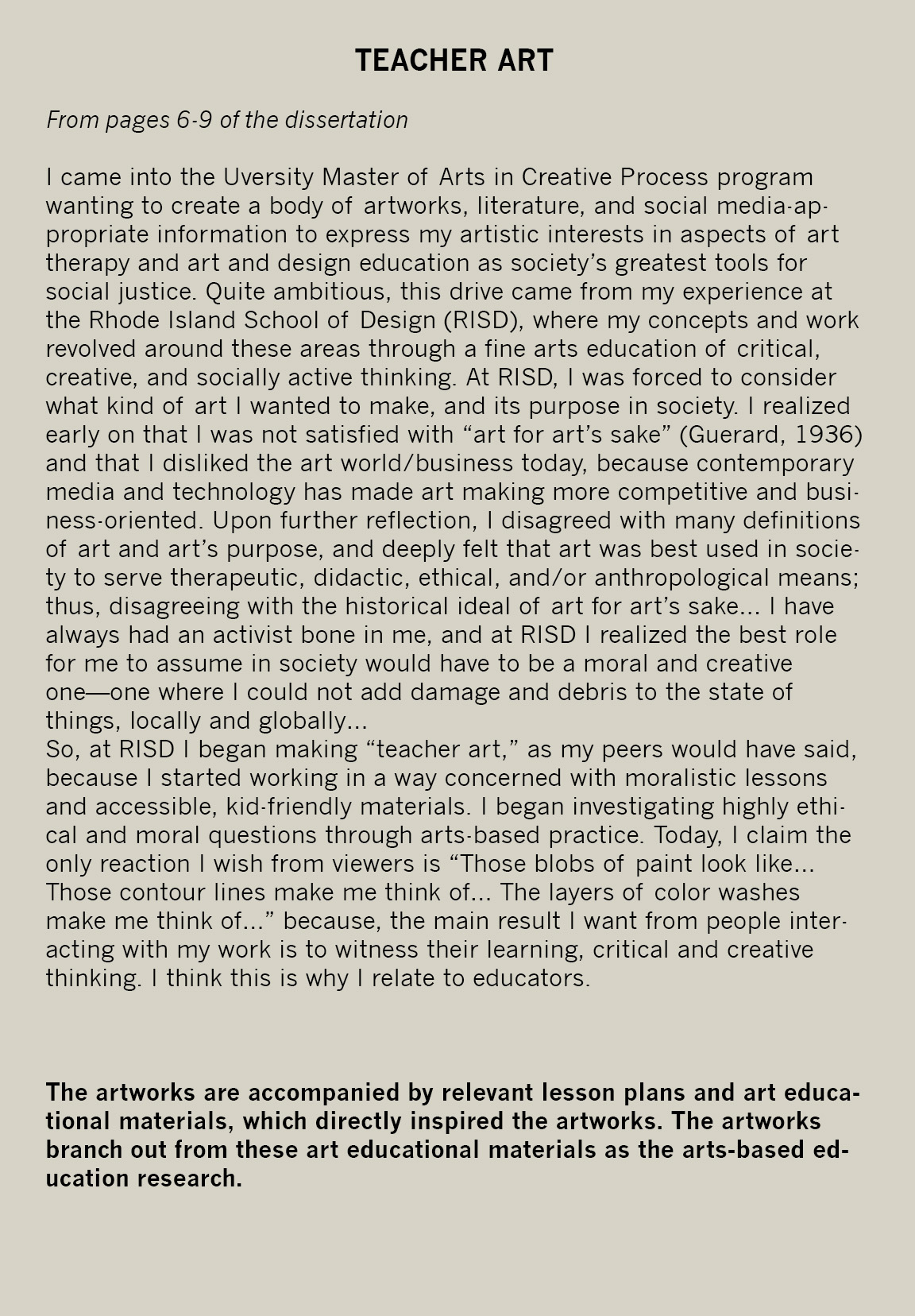


Backside Series


Backside
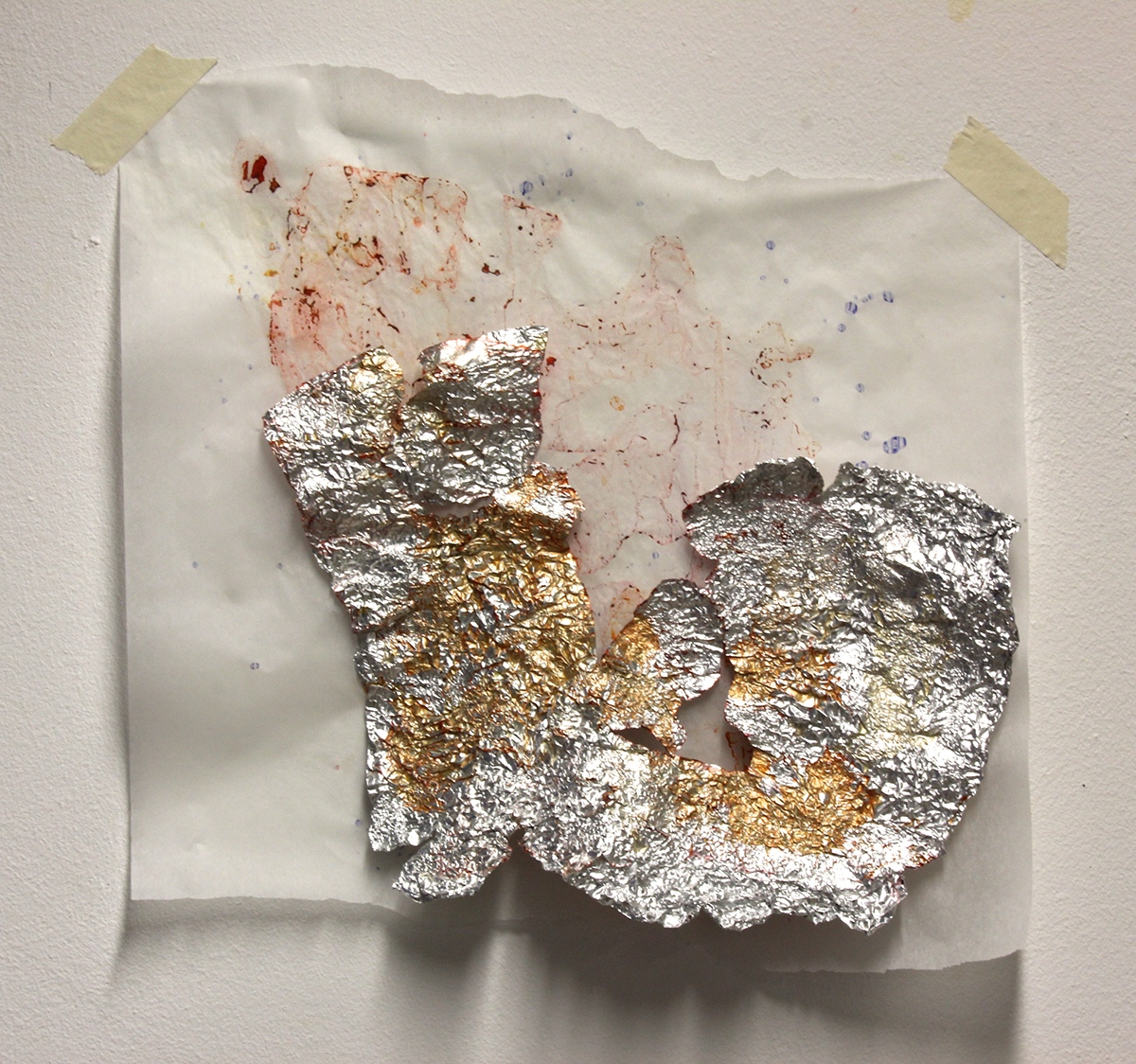
Accompanying wall text from dissertation:
The Backside Series:
Exploring chance in spilling and drying techniques
Honoring chance in the creative process, this series was made under an exercise of intuition. The aim was to create splendid, dried marks through perceptive spilling. In presenting the results of this exercise, the works are offered as examples of a process to the benefit of directly showing viewers what an art-based journey can look like.
Exploring chance in spilling and drying techniques
Honoring chance in the creative process, this series was made under an exercise of intuition. The aim was to create splendid, dried marks through perceptive spilling. In presenting the results of this exercise, the works are offered as examples of a process to the benefit of directly showing viewers what an art-based journey can look like.
‘Hickman adds that culture in art and design education may be taken to mean traditional art and design, “such as drawing from observation and making pots” (“The role of art and design in citizenship education,” 2003). He asserts that while traditional art activities are useful, educators need to locate activities “within in the broader context of education and educating young people as citizens who can make a meaningful contribution to society” (ibid)... Hickman advises educators to recognize the difference of teaching students in art and teaching through art: “the focus being learning about and making art and design as a way of becoming an educated citizen rather than becoming an artist or designer”... (p.13 of the dissertation).
The educational material on mono printing demonstrates exploration of the backsides of prints—by drawing on the backs of the paper, placed in rolled pigment, to create the drawn image on the front. The backside becomes its own work in the double-faceted process, studying the value in considering all dimensions of an artwork.

Backside

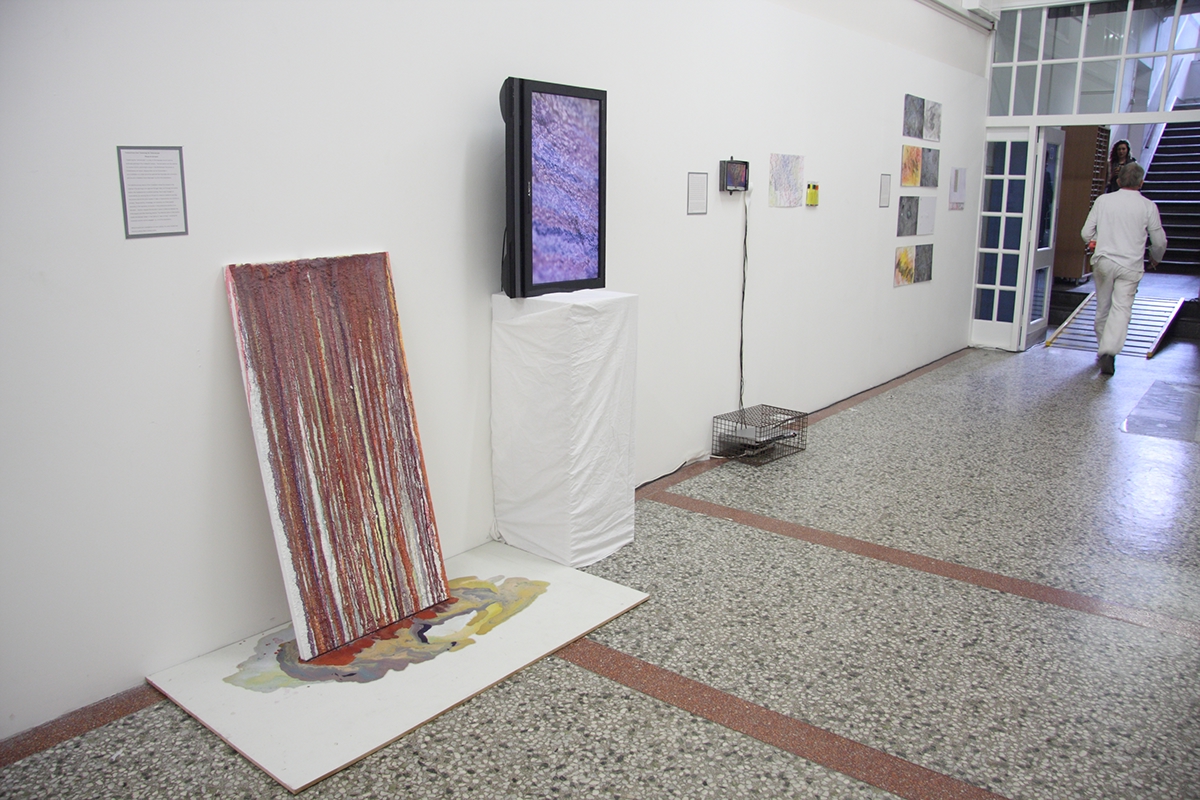
Traversing the Texturescape
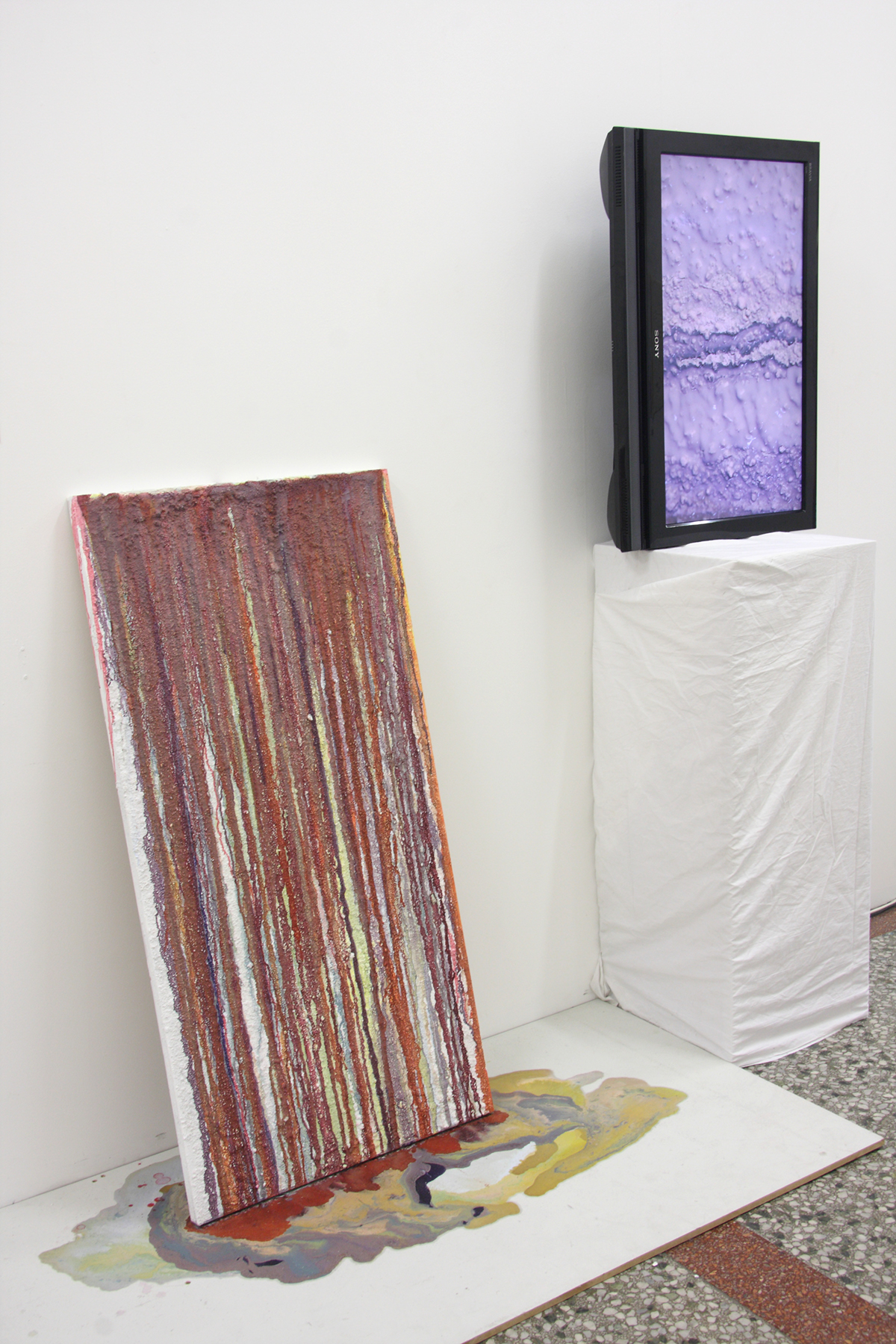
Video: Compositions from Traversing the Texturescape

Still from Compositions from Traversing the Texturescape
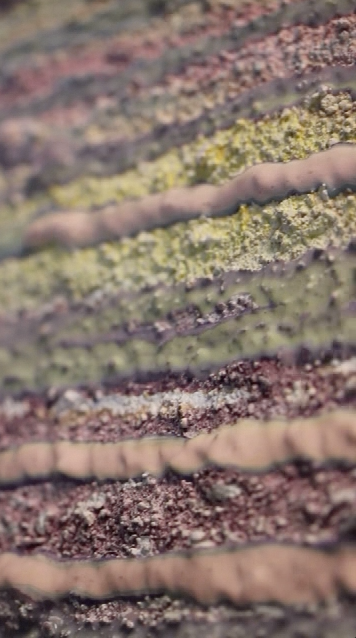
Still from Compositions from Traversing the Texturescape

Still from Compositions from Traversing the Texturescape
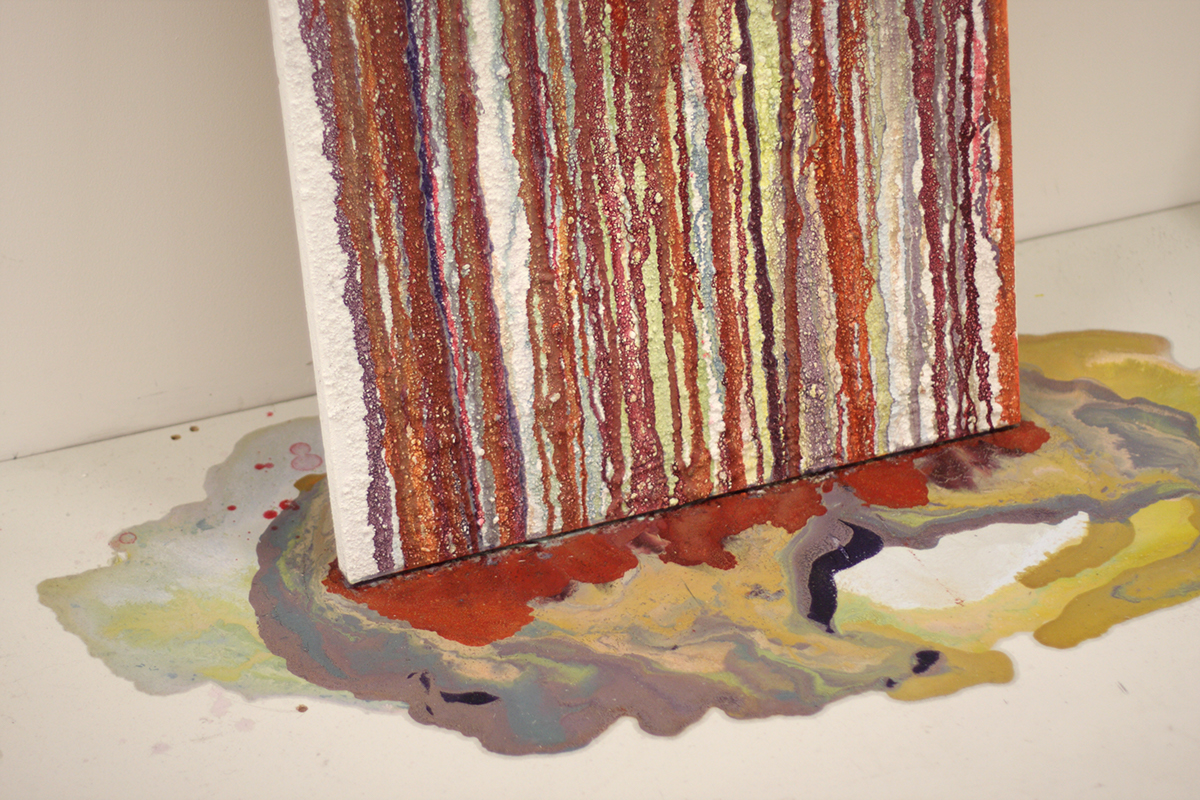
Accompanying wall text from dissertation:
Compositions from Traversing the Texturescape
“Traversing the Texturescape” is a play on the language around sublime, landscape painting of the nineteenth century. ‘The fascination with the sublime is a worthy pursuit, according to essays in the Whitechapel Documents on Contemporary Art series, because what can be re-presented is commodifiable—it is what cannot be captured that resonates with philosophy and life and is therefore more meaningful’ (p.18 of the dissertation).
The interdisciplinary nature of this installation allows the process of the making of the painting to be captured through video, and through the bottom board—the receptacle and incidental painting. Exercising a thought of sustainability, by catching the run-off paint to create an additional painting, the process behind this piece speaks to ideas of responsibility and intuition in process. ‘Responsibility, knowledge, and autonomy are three aspects necessary in the realization of intuition in the professional practice of an educator... Intuition impacts the educator’s sense of reflexivity between the three aspects and their teaching practice. The reflective sense in the practice makes the educator better in their ability to “wear all hats,” including the moralistic and the socially engaged.’ (p. 14 of the dissertation)
While all works are investigations of mark making, this piece studies how textural surfaces affect surface marks.
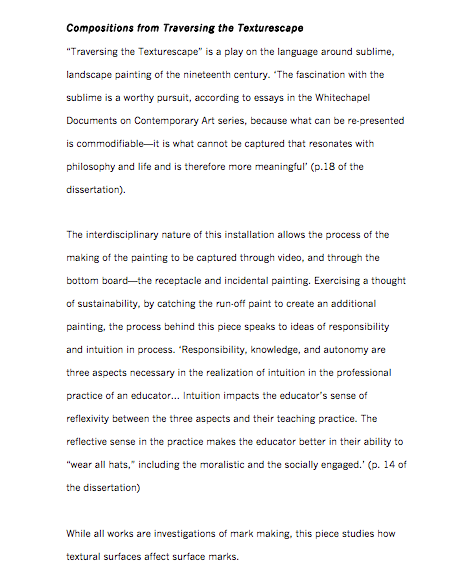
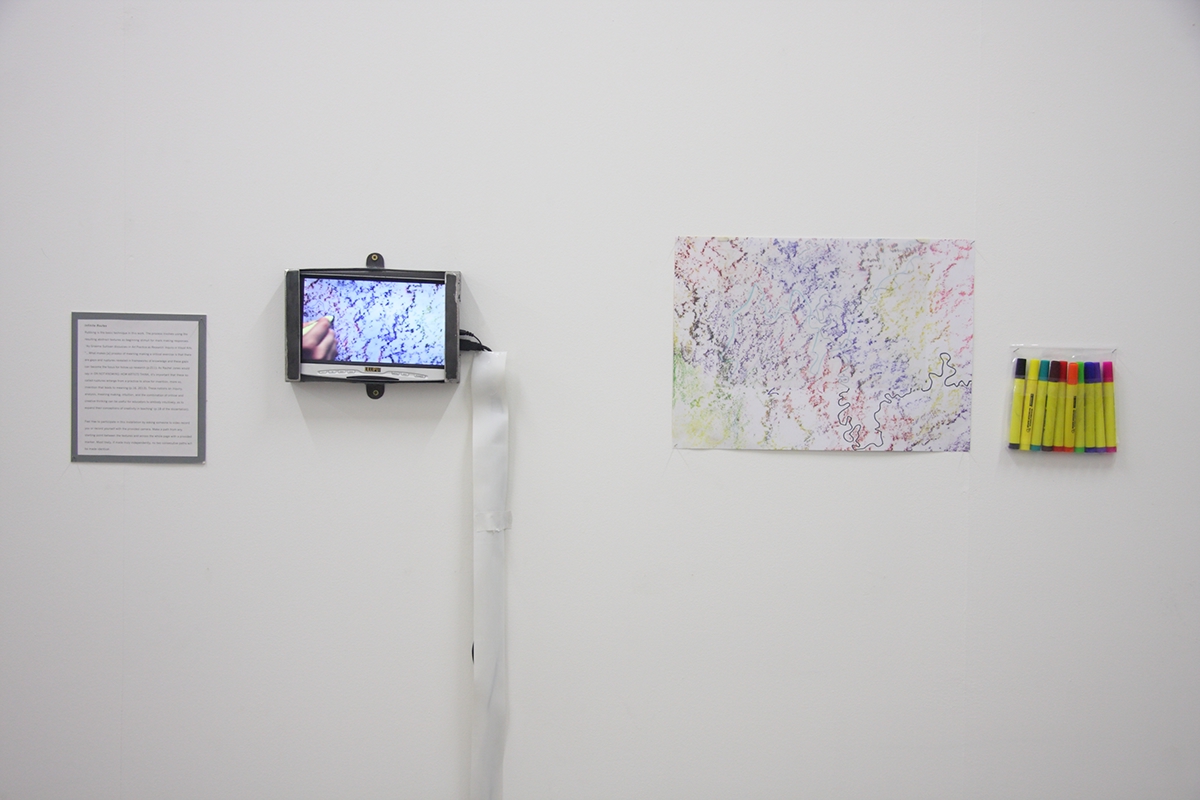
Infinite Routes, featuring 3 participants
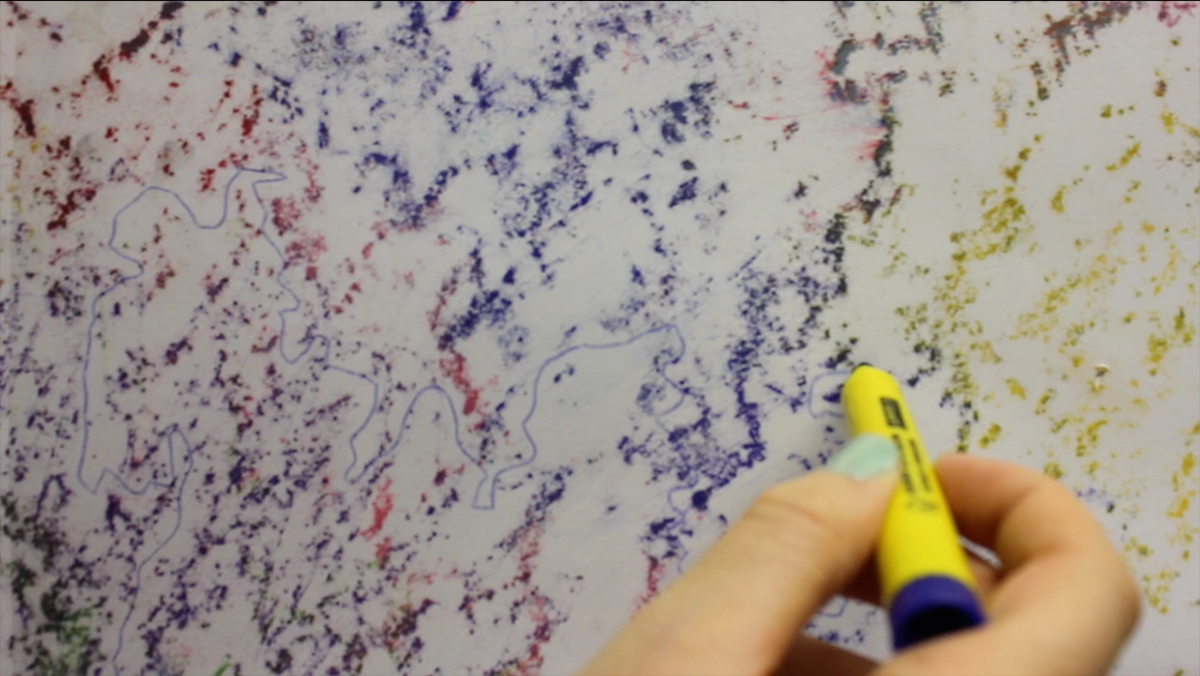
Still from Infinite Routes
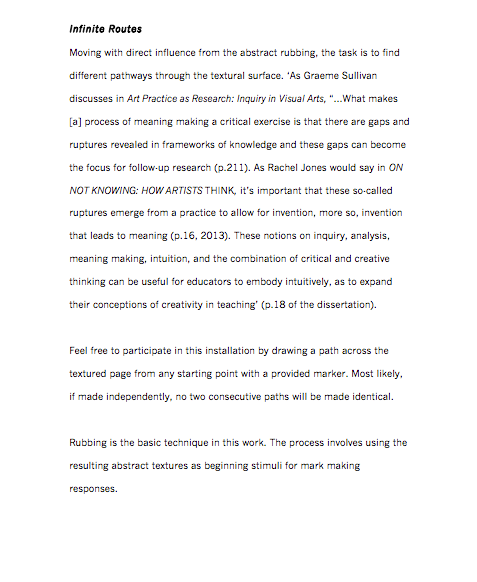

Mimetic Compositions from the Studio Floor
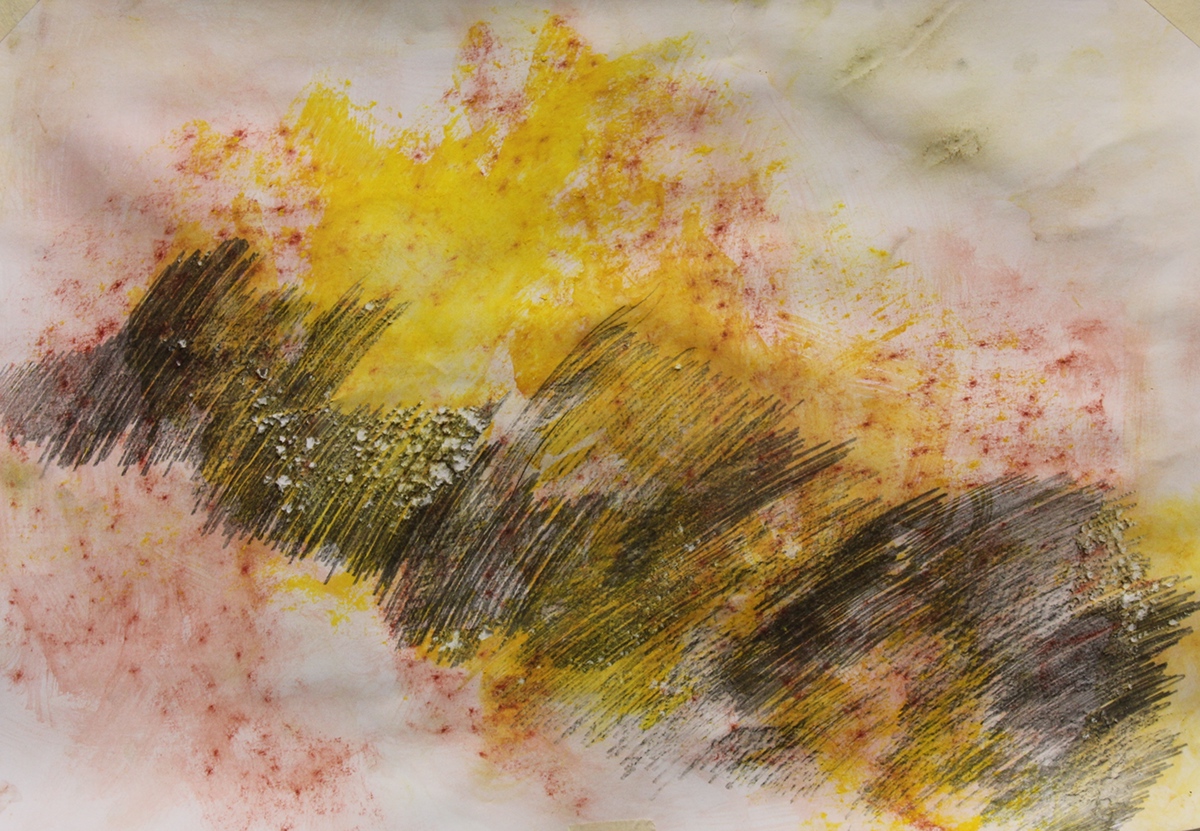
Detail from Mimetic Compositions from the Studio Floor
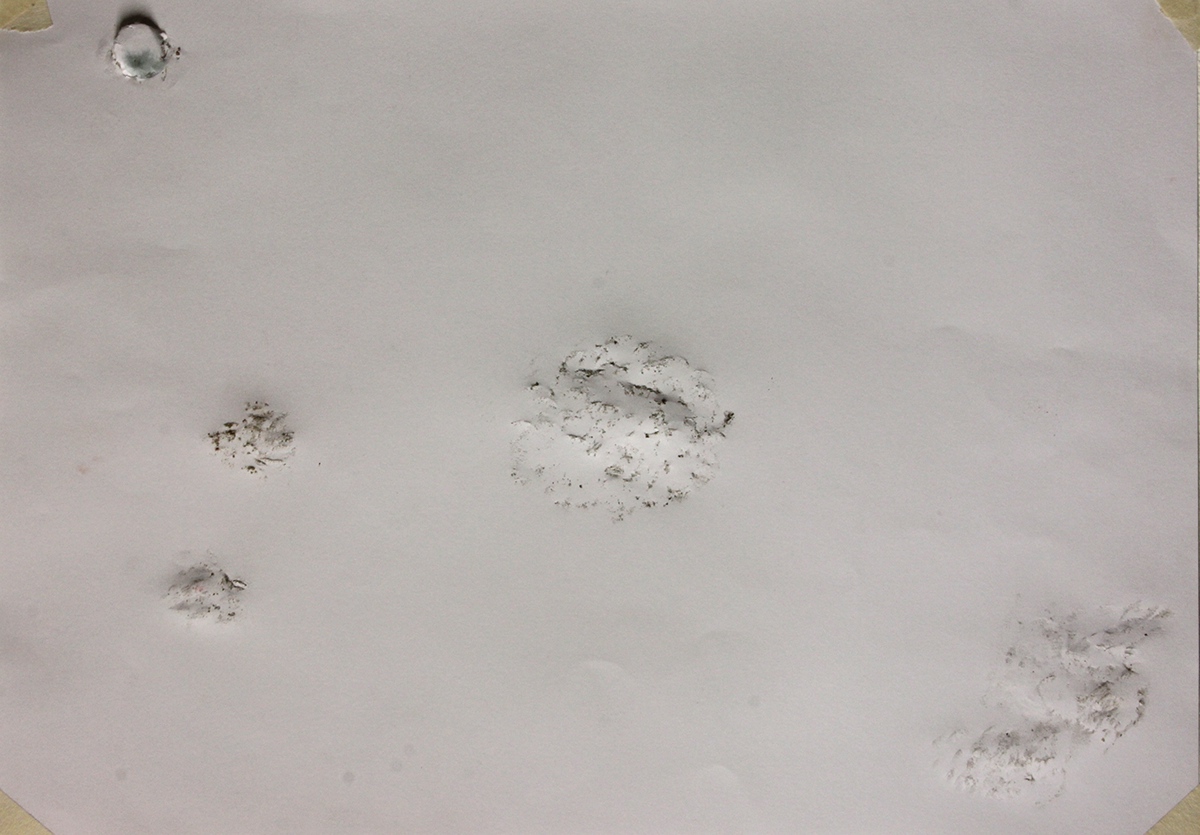
Detail from Mimetic Compositions from the Studio Floor
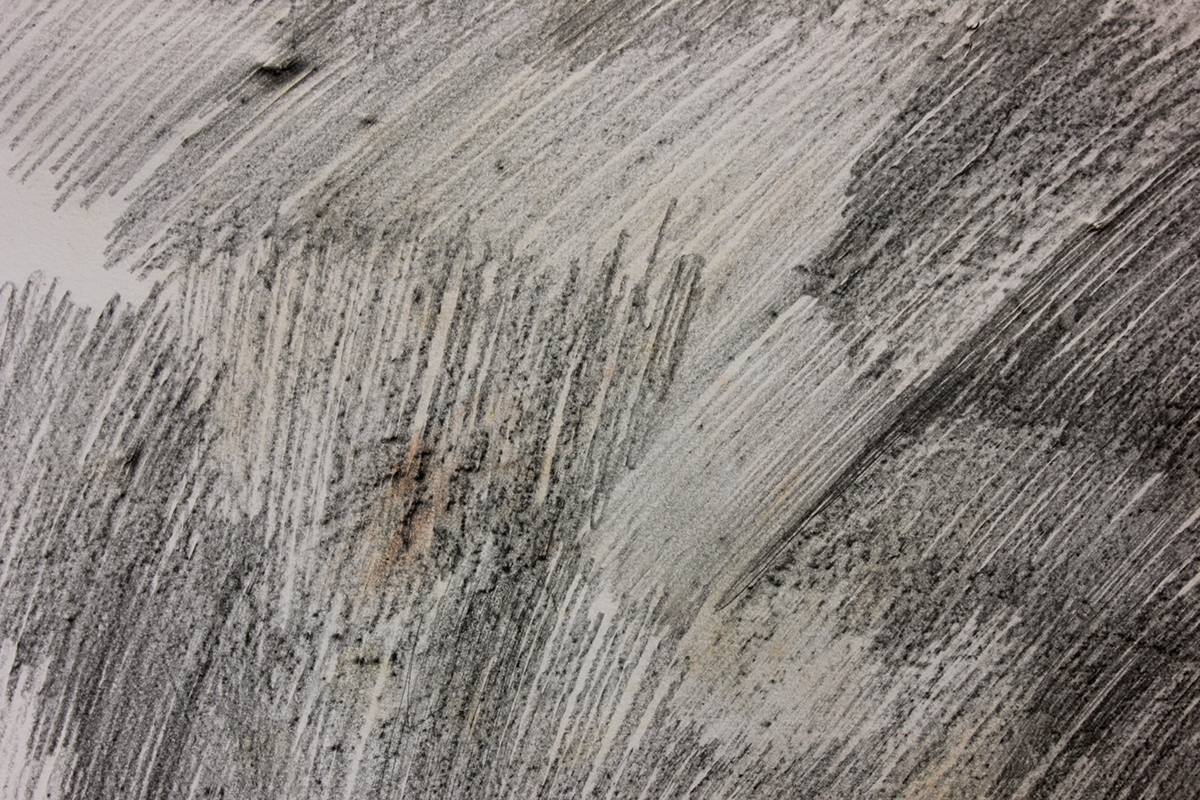
Detail from Mimetic Compositions from the Studio Floor
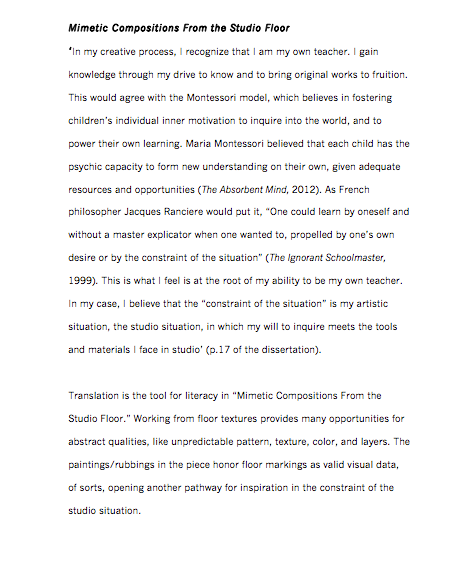

The other side of the corridor

Making Two Pieces Simultaneously at the Spill Station, with pieces made by participant visitors of the exhibition opening

Detail from Making Two Pieces Simultaneously at the Spill Station
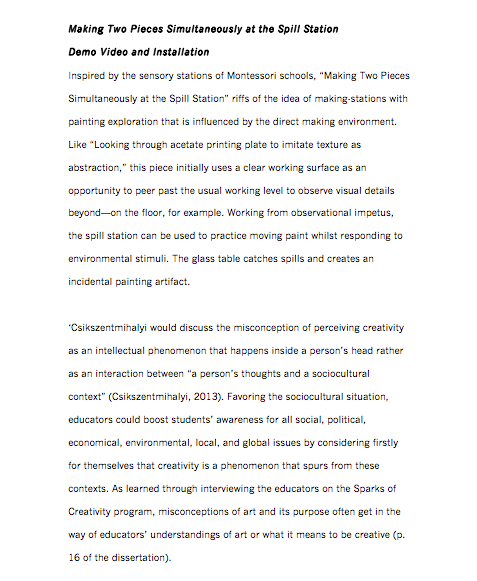

Looking through acetate printing plate to imitate texture as abstraction


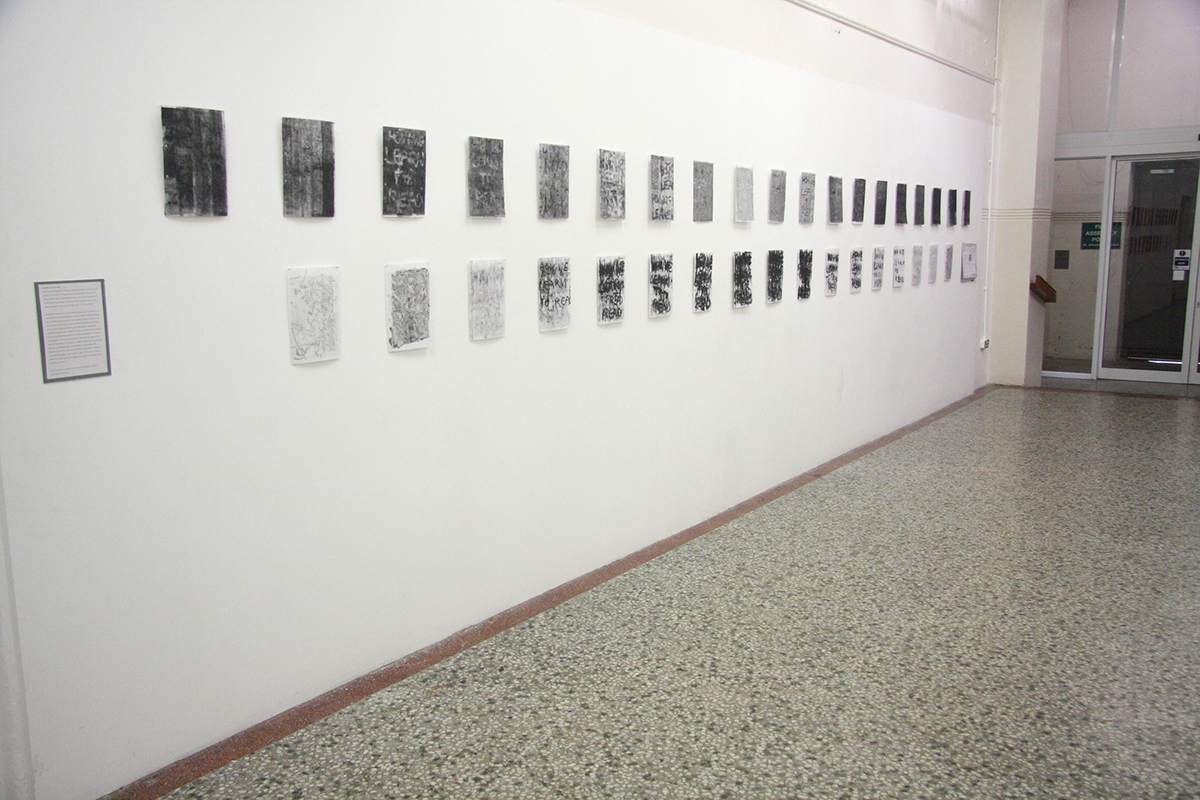
How We Learn to Read

Accompanying wall text from dissertation:
How We Learn to Read
Like how we actually learn to read text, repetition and layers of information are involved in the process of interpreting and comprehending information. The piece “How We Learn to Read” relies on layers of text and stamped repeats to build up a painting through an intuitive and technical process. Learning to read text relates to how we learn to read visuals—in this case, a series.
‘Inherently in dialogue with the theories of making through visual arts praxis, I found myself increasingly interested in how the process of making a painting, per se, is philosophically similar to that of learning. What my practice shows me these days is that process is more important than product, and that the cyclical nature of exploring problems and answering them independently vitalizes this inquisitive life. Through this, I came to identify with two contexts. The first being living inquiry, which is an important constituent of the second: “a/r/tography.” Living inquiry is the holistic study of life, art, research and teaching. The authors of a/r/tography... explain living inquiry as ‘an embodied encounter constituted through visual and textual understandings and experiences rather than mere visual and textual representations’ (Being with a/r/tography, Springgay). They mention “its rigor comes from its continuous reflective and reflexive stance to engagement, analysis and learning”’ (p.18 from the dissertation).

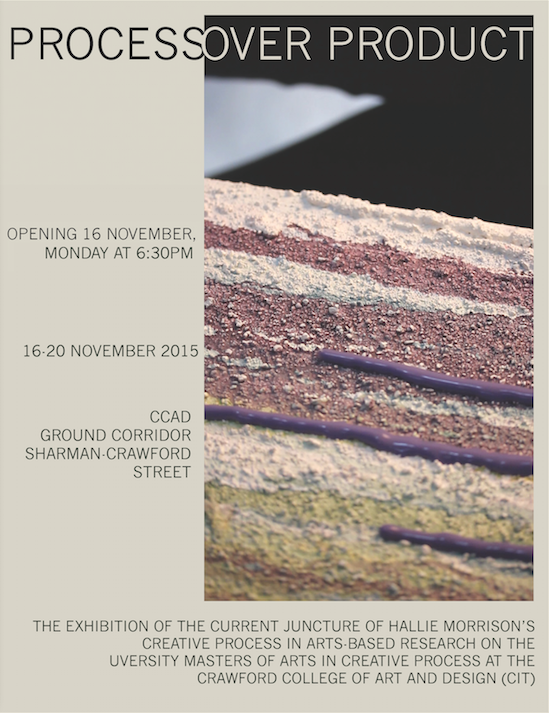
Poster for the exhibition

